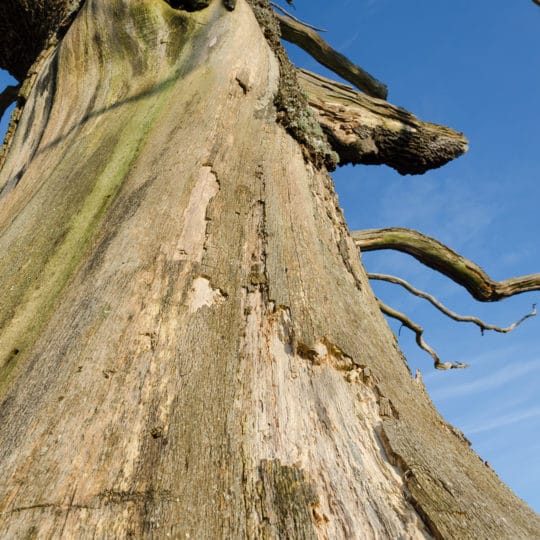Causes of Peeling Tree Bark
The Good and the Bad
Posted
November 22, 2018

Sometimes what may seem like a plant problem is actually not as disastrous as it looks—like peeling tree bark. Even though not all cases are causes for concern, it’s important to know more about the issue in the event that something should be done.
Trees That Have Peeling Bark
Some species of tree shed bark naturally. As it grows, bark thickens and forces the old, dead bark to fall off. You may not even notice it starting to crumble, but there are some trees that transform more dramatically. Sheets of peeling bark can be seen falling from the following trees:
- Silver maple
- Birch
- Sycamore
- Redbud
- Shagbark hickory
- Scotch pine
Environmental Causes of Peeling Tree Bark
Certain environmental factors can also lead to peeling bark. Sunscald or frost can affect one particular side of a tree, depending on what direction it’s facing. Overexposure of a wide area can increase the chances of a tree dying. Wrapping the trunk helps to prevent this issue, but any cover should be removed before spring so that it doesn’t become a home for insects and other disease.
Signs of Distress
Peeling bark, on its own, is not the only sign of a problem. Determine whether it’s a normal shedding process or if there’s a deeper issue. When bark is covering the wood after sections have been peeled away, it’s probably shedding naturally. If there’s more bare wood or mats of fungus under the peeling bark, the tree is suffering from environmental damage or disease.
Peeling Tree Bark Disease
Peeling bark from hardwood trees may be suffering from a fungal disease called Hypoxylon canker. This will also cause branches to die and leaves to yellow and wilt. Since there is no cure for this disease, it’s best the tree is removed and the wood destroyed to prevent the spread of fungus and possible damage and injury from falling branches.
If you question the signs of peeling tree bark, contact Elite Tree Care to discuss the issue and best course of action.